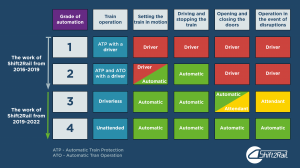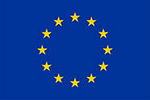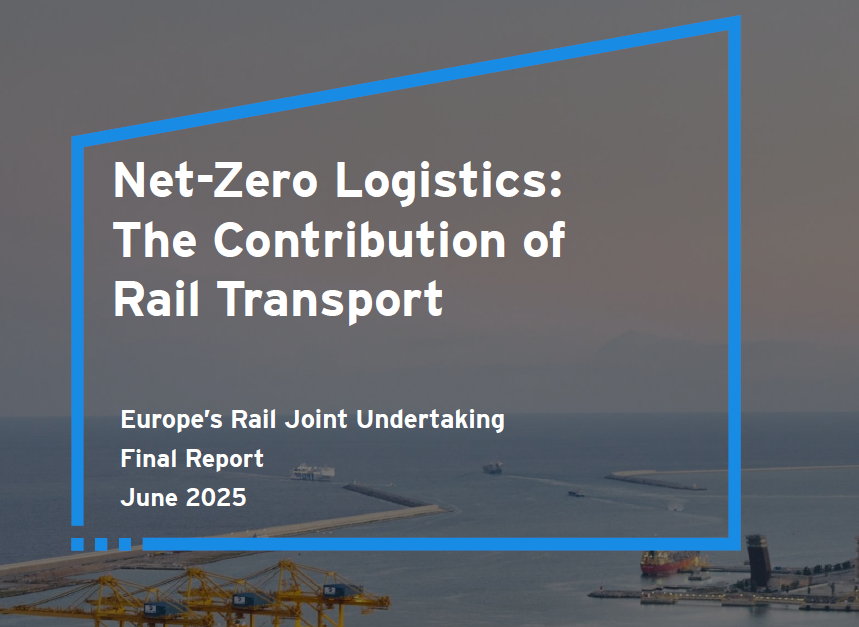Europe must take decisive steps to simplify and modernise its rail systems to strengthen competitiveness,...

Main benefits
- Energy savings up to 45% depending on travel distance/type of operations
- Significantly increase the level of punctuality +/- 15% on mainline and 23% for suburban traffic, due to overall automation
- Higher capacity up to 50%, when combining with other technologies such as moving block and new communication systems.
- Higher operational flexibility
Shift2Rail is working on automated train operations (ATO) based on European Rail Traffic Management System (ERTMS) that would allow maximizing the performance of train operations throughout Europe. The first pilot line demonstrations at GoA 4 (grade of automation 4) are planned for 2022.
The Challenge
European Mainline operators wish to provide improved performance of their trains while increasing the capacity of lines. However, with the current generation of signalling systems, these goals face a growing challenge, as the system does not allow GoA 4 to deliver substantial cutting energy consumption, increasing punctuality and especially decreasing headways between trains thus allowing to put more vehicles on tracks, increasing the network capacity. ATO is already in use in urban rail (i.e. driverless metros such as lines 1 and 14 in Paris, Lille, Copenhagen) and also beyond. Nevertheless, the variety of train types and the complexity of the national infrastructure (different type of train protection systems implemented across the continent as well as interfaces with elements outside the system e.g. level crossings or obstacles), this technology is not yet developed for mainline operations.
The Solution
The Shift2Rail Programme is working to bring automated train operations up to GoA 4 also for a diversity of rail systems. GoA 4 means that the train operation is fully unattended including setting a train in motion, driving and stopping the train, opening and closing the doors and operation in the event of disruptions. The Shift2Rail ATO is designed on ERTMS, the European standard for train protection, promoting interoperability and ease movement between countries in Europe by aiming to replace more than 20 different national (“legacy”) systems. ERTMS consists of two basic components: the European Train Control System (ETCS) that helps to automatically check that all trains are operating safely and an advanced communication system ensuring stable voice and data communication between the track and the train (currently GSM-R).
In the initial development phase, the work of Shift2Rail is focusing on ATO on mainlines up to GoA 2, where the driver supervises the system and opens/closes the doors while the train drives and stops automatically. The development of GoA 2 is based on an initial work funded by the European Commission’s under the TEN-T programme, which defined the operational concepts and started developing system requirements. Based on this work, Shift2Rail completed the system specifications, developed and test compliant prototypes that only three years after the start of the work has already brought results when in March this year, Shift2Rail member ProRail presented successfully its first self-driving mainline train (based on GoA2 specifications developed in S2R) in the Netherlands. The full test campaign involving further interoperability tests in Europe is expected to be completed beginning 2020.
The teams are now concentrating on developing GoA up to 4 – the fully automated and unattended level of automation. An important factor allowing fully unattended train automation is an adaptable communication system. Developed within Shift2Rail, the system is moving away from the use of GSM-R to a variety of channels as a future proof bearer independent communication system. It will make use of LTE, 5G, Wi-Fi, satellite communication and/or public networks to offer a high-capacity voice and data communication between the track and the train.
The first GoA 4 demonstrations are expected in 2022. ATO will be one of the key elements of the transformed European rail system benefiting from an increase in capacity, reducing energy consumptions and costs while offering higher operational flexibility and improved punctuality.
















